Sign up for FlowVella
Sign up with FacebookAlready have an account? Sign in now
By registering you are agreeing to our
Terms of Service
Loading Flow


To summarize, cheese is made of milk, rennet, lactic acid, and propionibacterium. The carbon dioxide slowly forms bubbles that then develop into the eyes of the cheese or the holes. The carbon dioxide is one of the waste from the three bacteria used. Streptococcus salivarius subspecies thermophilus, Lactobacillus (Lactobacillus helveticus or Lactobacillus delbrueckii subspecies bulgaricus), and Propionibacterium (Propionibacterium freudenreichii subspecies shermanii). In a later part of cheese creating, the propionibacteria eat the lactic acid thrown out by the other bacteria and produce and unleash acetate, propionic acid, and carbon dioxide.
Title